
How to Grow the Best Vegetables You’ve Ever Seen
An edible-garden expert shares tips on raising and harvesting produce that puts most supermarket vegetables to shame.
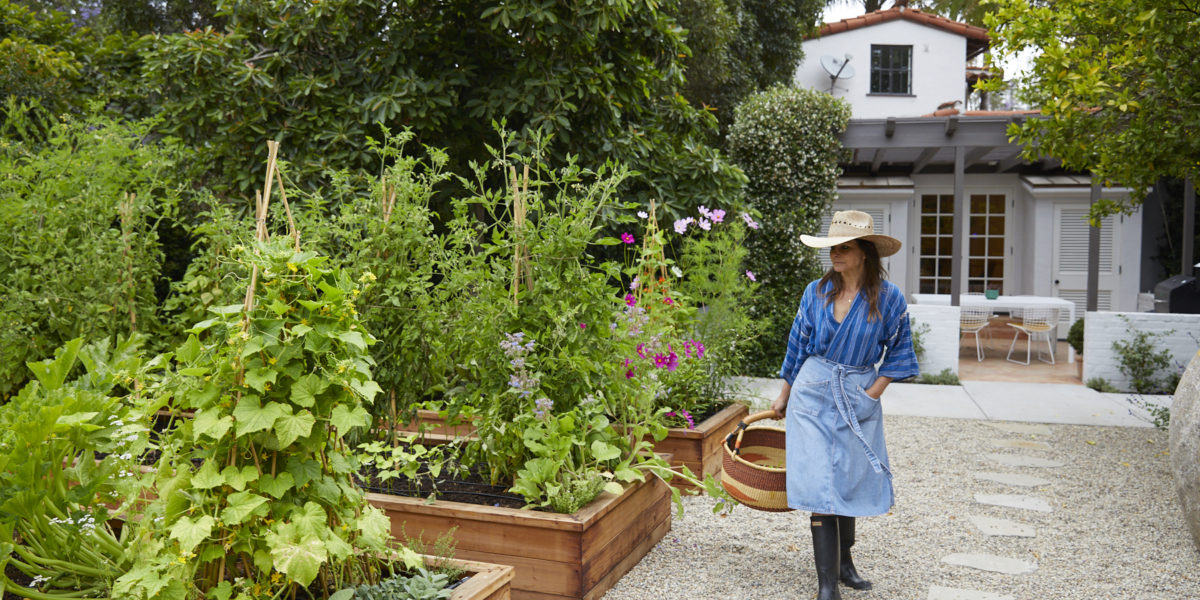
Photographs by Yoshihiro Makino from the book, A Garden Can Be Anywhere, by Lauri Kranz and Dean Kuipers, published by Abrams Books
The following is excerpted from our newsletter, “Sunset 101: The Ultimate Guide to Raised Beds.” To find out more about Sunset’s newsletters, click here.
Lauri Kranz, founder of Edible Gardens LA, has spent years gardening and growing. She designs landscape and edible gardens, and has co-authored A Garden Can Be Anywhere, which details how to grow your own beautiful edible garden. Edible Gardens LA delivers fresh produce from their own farm and local Los Angeles farms to L.A. residents.
When it comes to growing your own food, Kranz stresses the importance of learning as you go. “My biggest tip is don’t expect and don’t put pressure on yourself that you’re supposed to know everything before you get started,” Kranz says. “You’re going to build your own relationships with your garden.”
We spoke with Kranz on how to prepare and plant your raised bed’s edible garden. Read on to learn more about how to grow plump, juicy vegetables this spring.
How do you recommend preparing your raised bed for planting vegetables?
The first thing to do is to fill them with good, rich, organic soil. I suggest people try, it’s not always possible, but it’s good to find a local producer of organic soils so you can get a large amount. I fill up to the last one to two inches of the bed with organic soil, and about two inches below the top, I put compost in. I find that’s really great for new planting of both seedlings and seeds, and as the bed is watered the compost trickles down to nourish the roots.
Once you’ve been through a growing season, you definitely want to amend with good compost, but when you first fill your beds with organic soil, that’s a really rich soil already so topping it with rich compost will really speed up the seedlings and seeds.
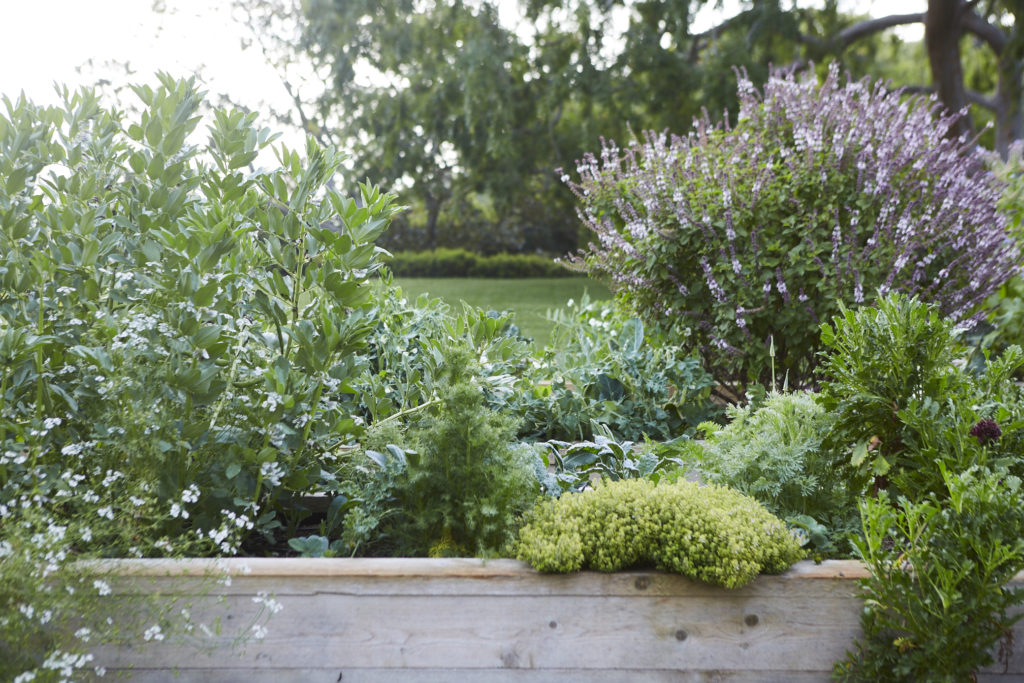
Photographs by Yoshihiro Makino from the book A Garden Can Be Anywhere, by Lauri Kranz and Dean Kuipers, published by Abrams Books
What are common problems people run into when it comes to planting vegetables?
The thing to think about when growing your own food is that vegetable plants are much more tender than the plantings that most people work with more regularly. In terms of landscape, they require extra attention, which is very doable, and care. So some of the problems people run into can be as easily rectified as water, but you want to learn how much the garden really needs and it’s really different from what the rest of your garden needs.
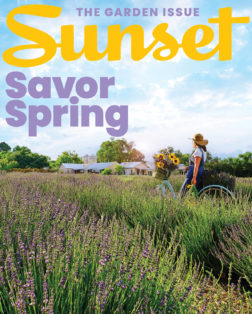
Sunset’s Garden Issue 2022
More from this issue:
- Need Help Taking Care of Your Air Plants? We’ve Got Just the Guy
- Stroll Through Lotusland, the Fantastical Botanic Garden of Your Dreams
- What Happens When the West Coast Barbecue King Sets out to Conquer Fried Chicken?
- Add Some Color to Your Brunch with Edible Flowers
How do you monitor watering your edible raised garden bed?
If you’re using drip lines and a timer for your vegetables, which I do recommend, they need to have their own valve and have their own timer so you can easily regulate their water needs. Sometimes overwatering can weaken the plants, and you really want to think about the needs. Sometimes the top of the dirt looks really dry, but seedlings start with shallow roots and they become much deeper, so you want to make sure that you’re not overwatering because you can limit how much the plant produces. Some plants need more moisture and in addition to using irrigation, you want to be prepared in the hottest times of growing season when you may want to hand-water as needed.
When you have drip lines, they do have omitters where the water actually comes out of, so I tend to plant the plants that need more water exactly where the omitters are so they get more moisture. You want to keep plants like tomatoes moist but still keep it separated, so plant them further from the omitters. You can play around with what you have, and you want to watch where your irrigation and drop goes off.
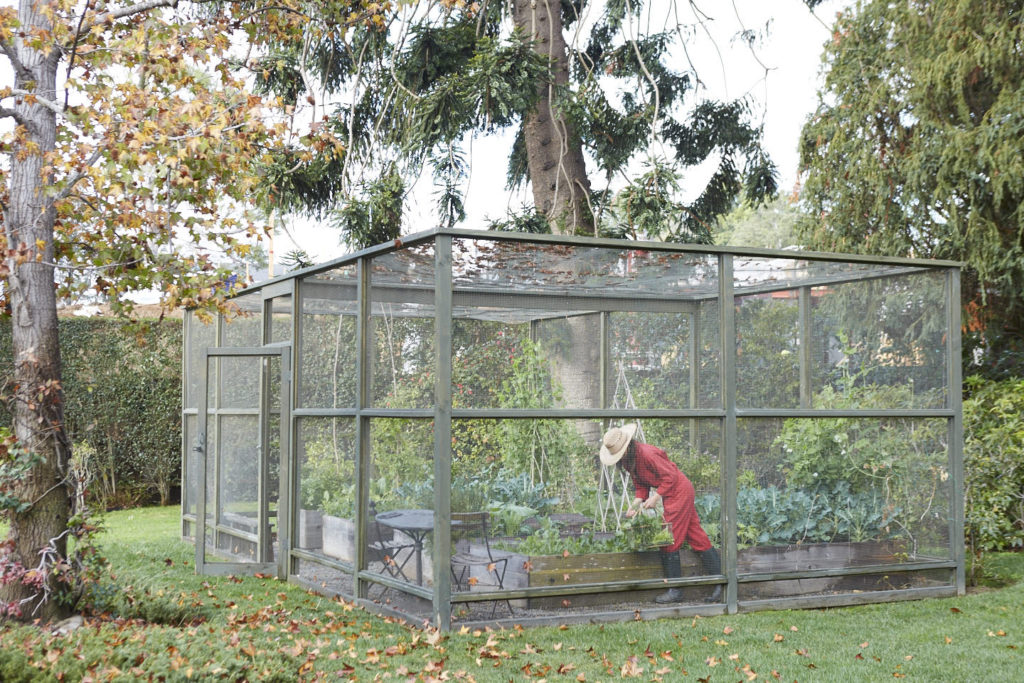
Photographs by Yoshihiro Makino from the book A Garden Can Be Anywhere, by Lauri Kranz and Dean Kuipers, published by Abrams Books
What is the best way to keep constant in maintaining your garden?
I like to work with clients and have them see time in the garden as a pleasurable and joyful experience. What I try to do is have people either start or end their day in the garden, which are the cooler time periods and are more enjoyable to come out with a cup of coffee or a glass of wine. You want to be in your garden and tend to your garden, and with raised beds, you get less weeds so it’s less tending and more of helping the beans go up the trellis or watching the tomatoes plump, and it’s really lovely work to help properly support the vegetables as they grow. What’s really important in a vegetable garden is the food needs to be harvested when it’s ready.
What is the most important thing when it comes to harvesting an edible garden?
A lot of people think they’ll leave the food until they’re ready to use it, but the food will rot and can draw critters if you wait too long. They’re also not as delicious to eat, and when you’re growing your own food, even when you harvest it before you’re ready to use it, you’re still eating it better than getting something from the grocery store.
Harvest things when they’re ready, tend to the crops, and feed them along the way. I like to use a compost and seaweed product that you dilute, both of those are really nice ways to support healthy growing and add in nutrients.
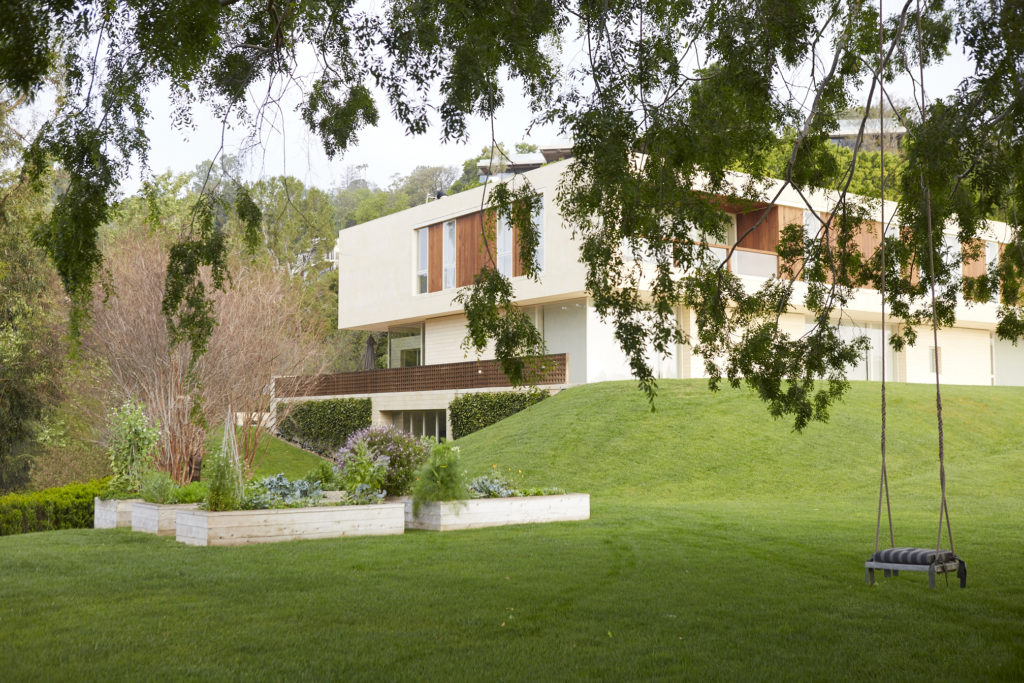
Photographs by Yoshihiro Makino from the book A Garden Can Be Anywhere, by Lauri Kranz and Dean Kuipers, published by Abrams Books
What signifies a healthy vegetable garden?
I think the tough thing for people is sometimes when they’re growing their own food it’s hard to tell when it’s ready and it’s important to experiment. You’ll need to know that mistakes will be made, and it’s not just mistakes that we as gardeners make. You’ll have seasons where animals will come in or you’ll have other seasons where you’ll have little interference, but getting into your garden and growing will be your best teacher. It’s part of your education as a gardener to be in your garden, it’s a very humbling and beautiful task and work to do to grow our own food. You’ll have huge successes where you’re getting a great yield, or sometimes you’ll have crop failures. Even the most experienced gardeners will have failures, so spending time in your garden will help you know it the best.
A good set of clippers is the best tool a gardener can have.
Lauri Kranz
What is your favorite vegetable to grow?
My favorite vegetable to grow are fava beans. They are beautiful in the garden, with lush green leaves and flowers that eventually turn into fava bean pods. They are heavy producers and are resistant to wildlife. I tend to plant fava beans in areas of the garden that are the most vulnerable to critters as they help to keep the animals away. The roots of the fava bean plants add nitrogen to the soil. They are a healthy vegetable for both our soil and our bodies—and delicious too!
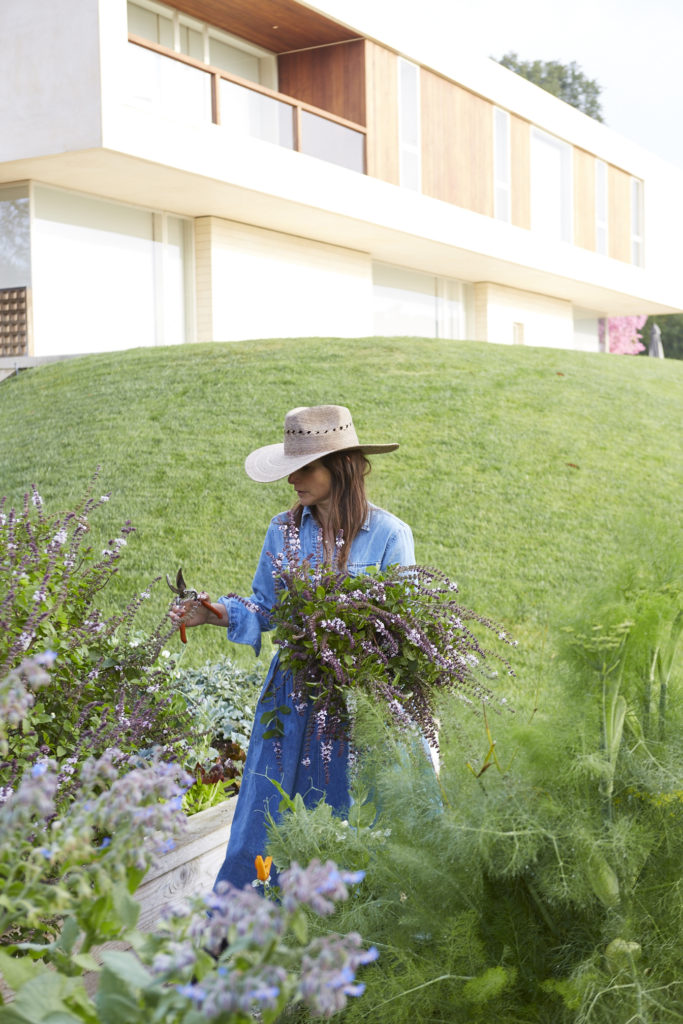
Photographs by Yoshihiro Makino from the book A Garden Can Be Anywhere, by Lauri Kranz and Dean Kuipers, published by Abrams Books
What are your tips for first time gardeners?
My biggest tip is don’t expect and don’t put pressure on yourself that you’re supposed to know everything before you get started. You’re going to build your own relationships with your garden, and there will be times of exceptional success and there will be times of frustration, but it’s important to just keep doing it because just by showing up and putting your hands in the soil and working that garden that is very personal to you, you will go on a wonderful journey of food and growing in many different ways.
What is your favorite gardening tool?
I really only use a couple different tools, and I love a good clipper. It really helps me especially when I’m trying to take out the old season of, say, sugar snap peas or climbing beans. A good set of clippers is the best tool a gardener can have, and you can just take it out of your apron or pocket to use.
To subscribe to “Sunset 101: The Ultimate Guide to Raised Beds,” click here.
